How do I clean my dishwasher?

In order for the dishwasher to serve for a long time and properly perform its functions, the owners must follow certain operating rules. The dishwasher requires periodic maintenance, otherwise users may face many problems. If the product is not serviced, then over time, an unpleasant smell, white bloom and even mold will appear inside, and if measures are not taken in time, then the equipment will completely fail.
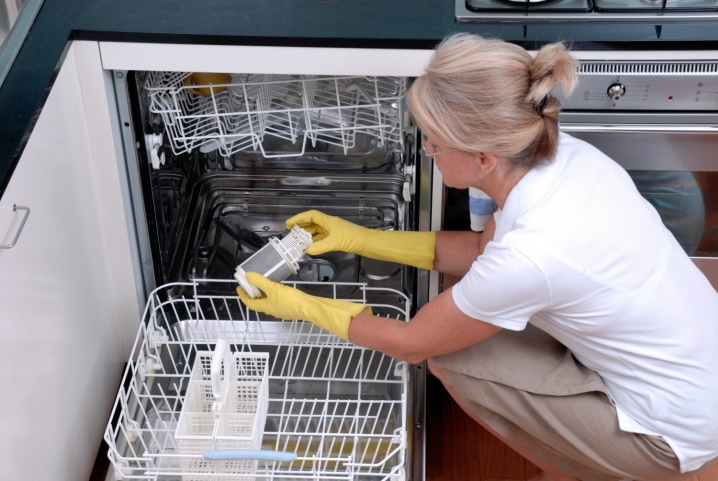
This article will show you how to care for your dishwasher at home in order to extend its life. Below will be described not only the chemical methods of caring for the dishwasher, but also folk methods that are recommended by experienced users of the machine.
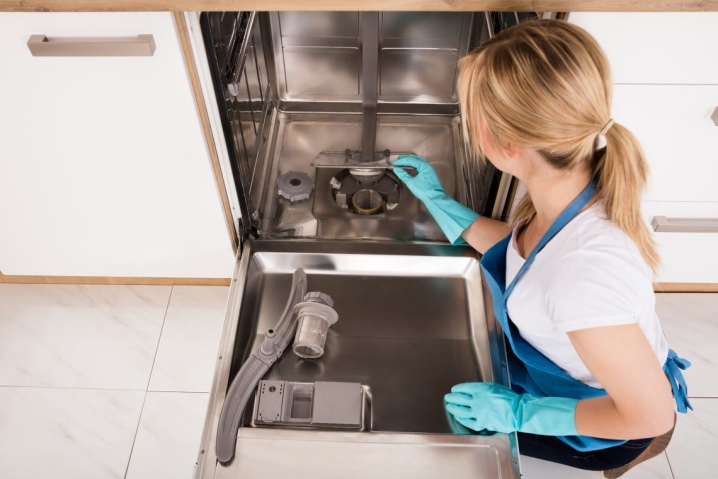
Fundamental rules
Before you learn how to clean your product, you should familiarize yourself with some of the rules for caring for it. This way you can significantly reduce the amount of work to be done.
- Complex cleaning of the device should be done every month, and the filters should be washed at least once a week.
- The dishes in the trays should be arranged according to the manufacturer's recommendations. Almost all firms make the same layout: heavy dishes (frying pan, saucepan, baking trays with soot) are always placed on the lower shelves, since there is much better washing quality. Mugs, spoons, plates should be placed upside down. This will prevent powder and water from collecting inside.
- Before you start washing, do not forget to wipe the dishes with a paper towel so that no large pieces of food remain inside.
- If the liquid or tablet contains softeners, you should always add regenerating salt to them.
- Do not be lazy to remove the filter mesh after each dishwashing. Collected debris must be removed in a timely manner.
- The powder compartment should always be checked for residues.

It is not recommended to use metal sponges to clean the inside of the unit, as the hard fiber can scratch the protective layer, as a result of which rust will begin to form. For this work, try to take only special sponges and rags.
After each processing of the dishwasher, its insides must be wiped with a dry cloth, otherwise the appearance of a musty smell cannot be avoided.
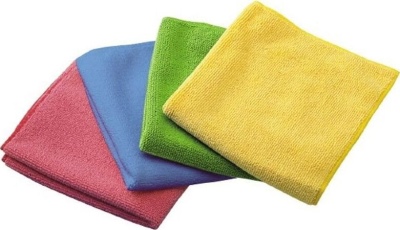
Mechanical cleaning
Almost all modern dishwashers are equipped with a self-cleaning function, but experts say that filters and other components of the machine need to be washed by hand from time to time.
In most cases, professional cleaning chemicals may not be enough, especially if the filters are clogged or your home has hard water. Therefore, if you want the product to serve for a long time, you need to provide it with high-quality and timely care.
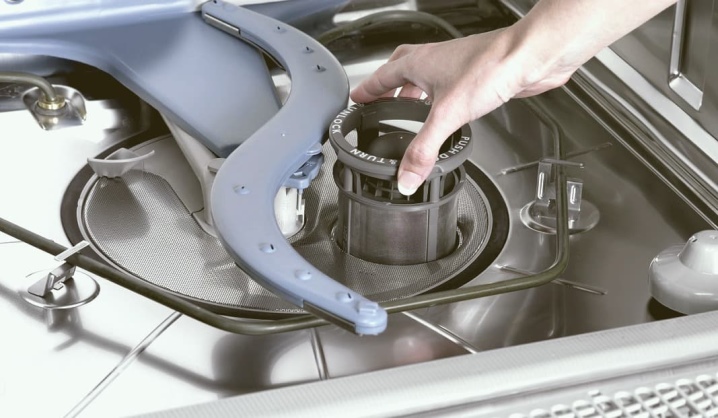
Filter rinsing
Regardless of the model of the dishwasher, there is a multi-layer filter on its base. He has one task - to prevent food pieces from entering the drainpipes.
Even if the owners regularly follow the advice of the manufacturer and after each meal remove the remnants of food from the dishes, the operation of the machine may still stop. One of the reasons is hard water build-up or fat build-up.
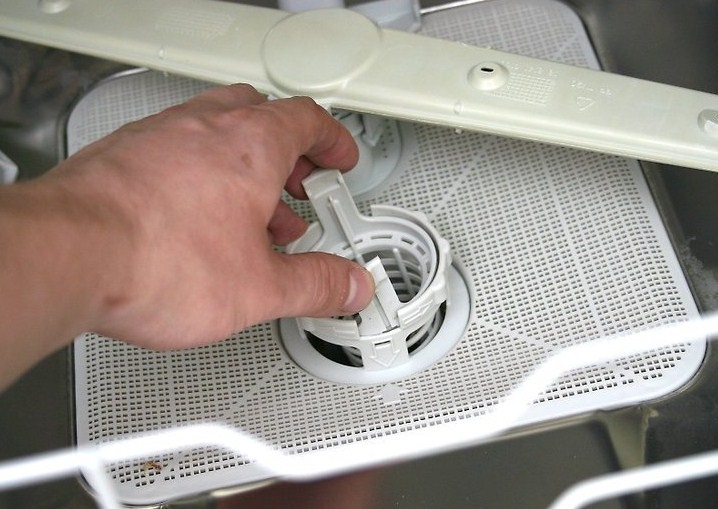
It is recommended to wash the filter every 3 days, since the mesh is usually fine and can become clogged even with pieces of powder, the machine will inform you about this, showing an error in the operation of the drain system on the monitor.
Let's take a look at how to get close to the filter to flush it.
- Unplug the clipper.
- Next, you need to remove the lower basket. If there is water at the bottom, then it can be absorbed with a sponge or rag.
- Examine the bottom of the machine, there is a ball-shaped recess near the spray arm. It has a filter. It consists of three parts: a fine filter, a mesh and a glass with large holes.
- In most modern dishwashers, the filter is removed quite simply: on some models it can be unscrewed, on others you just need to pull it up. If the machine is old, then a screwdriver, pliers or other tools will come to the rescue.
- Remember to remove the water under the filter with a sponge and check for other contaminants. This is a very important point, because if solid particles get through the filter protection, then the pump will definitely have to be carried for repair.
- Next, you need to make sure that the impeller is in working order. To do this, using a screwdriver, you need to unscrew the self-tapping screw, remove the safety bar and try to scroll the blades. If they spin without slowing down, then everything is in order and the self-tapping screw can be screwed back. If not, then you will have to disassemble the pump and look for a malfunction.
- As the last step, all components must be cleaned of food debris and washed under warm running water with any dishwashing gel. If you have not cleaned the filter for a long time, then the mesh is most likely clogged up or scale has appeared on the glass. In this case, the parts must be left in a vinegar solution for two hours.
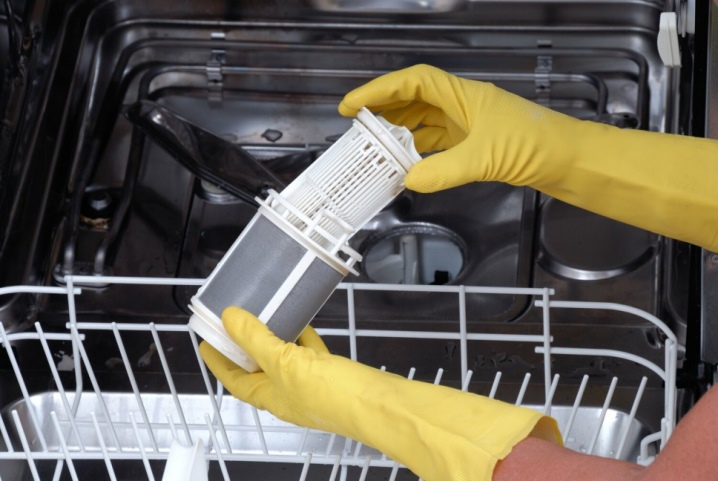
The outlet filter is the part where blockages are most likely to accumulate. However, if you are engaged in a complete mechanical cleaning, then do not forget to check the condition of the intake hose. Often powder, salt and pieces of plaque collect here.
Finding the input filter is pretty straightforward. To do this, stop the water supply and disconnect the hose. The fine mesh will be right in front of your eyes. Next, you just need to take out the membrane and rinse it along with the hose.

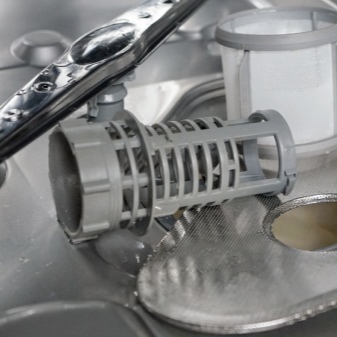
To flush out the bay, you must disconnect the inlet hose. There will be a pair of filters in front of your eyes: right at the inlet and behind the tee. Both membranes must be carefully removed and also rinsed under warm running water. If there is mechanical damage or the parts cannot be washed, then they will have to be replaced.
These filters are cheap and sold at any plumbing store. The final step is to put all the parts back together.
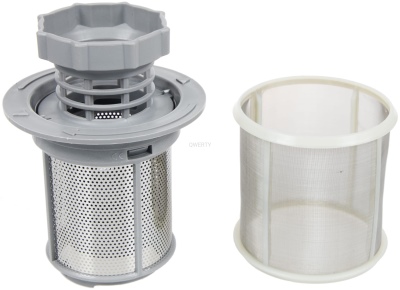
Cleaning the sprinklers
The second most common dishwasher element that often fails is the spray system. Despite the fact that the water from the hose is already clean, small pieces of sand or calcium salts often cause a stop, even with an inlet filter.
Among other things, water with increased hardness negatively affects the condition of seals, pipes, nozzles, therefore experienced experts recommend checking their condition at least every month.
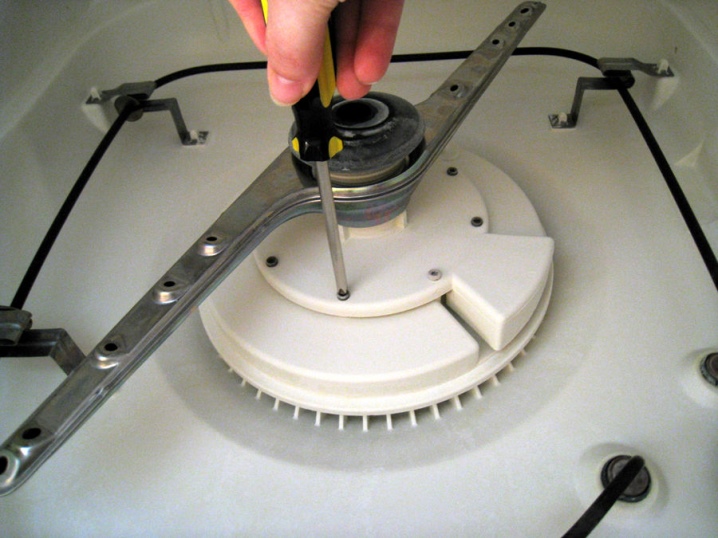
During the preventive cleaning of the impeller, you can use an unnecessary toothbrush, fishing line, or toothpick. During work, you must not make sudden movements, otherwise you will simply push through the debris, and it is much more difficult to get it from the inside.
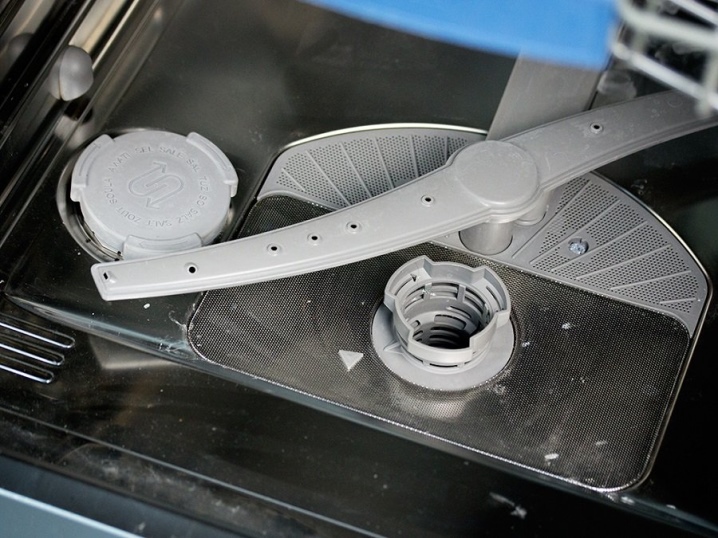
Let's walk through the steps on how to properly clean the nebulizers.
- First you need to get the upper basket and the rocker arm that is attached to it.
- Bend the fasteners and disconnect the spray arms.
- Next, we take out the lower basket and take out the rocker arm. This is easy: hold the center of the element with one hand and turn it counterclockwise with the other.
- Pay attention to the condition of the seals. Purchase new ones if required.
- Debris must be removed from the nodes, the blades must be rinsed in running water.
- Once everything is in place, make sure that the spray arms rotate without braking.
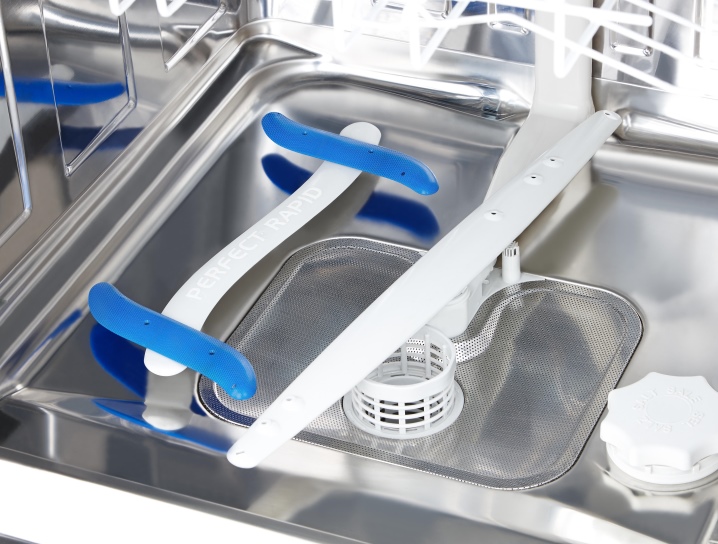
The fixing parts of dishwashers of different models and sizes may differ from each other. Therefore, before starting work, it is recommended to read the instructions that come with the kit. This will avoid most accidental breakdowns.
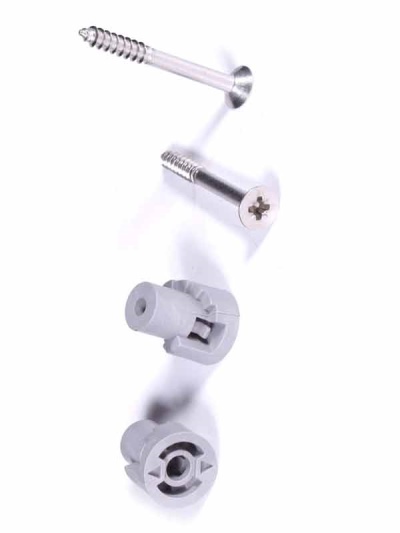
Cleaning the body and seals
The insides of the product, baskets and elastic must be wiped off after each use of the product. If you wish, you can disinfect these elements using special solutions that can be bought in household chemical stores.
The joints on the lower area of the door should be washed especially carefully. When washing dishes, these parts are poorly washed with water, and therefore, small food waste is often collected here and emit an unpleasant odor.
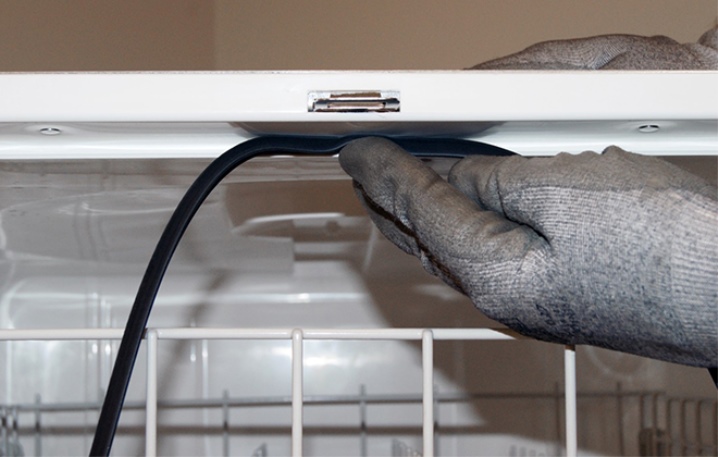
To avoid mold and damp odors, ventilate the box until all drops of water have evaporated.
If the seal is in a more or less clean state, then you can simply wipe it with a damp sponge, which must be saturated with a cleaning solution. If there is a lot of dirt, then a toothbrush comes to the rescue.
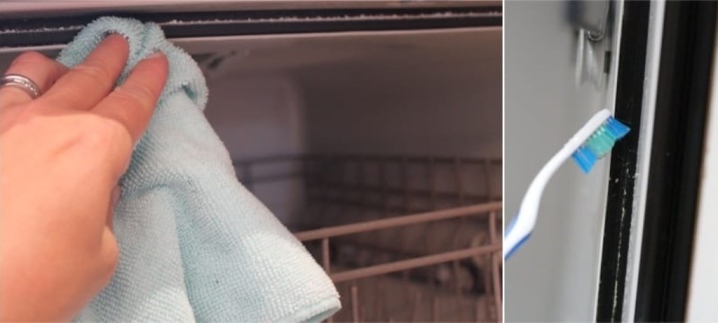
Many housewives spray the product and begin to wash the door with a wet rag. It is forbidden to do this, because liquid can get on the wiring and close the contacts. In this case, repairs cannot be avoided.
Seals should only be washed with household chemicals. Folk remedies (vinegar, lemon) will not work here. Acids can dry out the gum and cause the machine to leak.
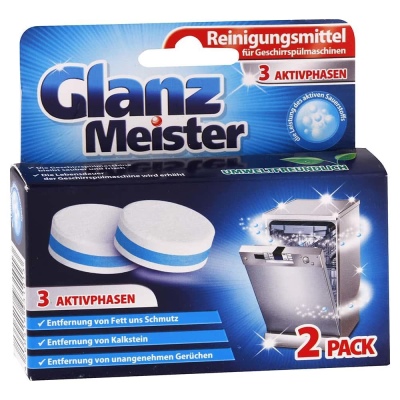
Please note that after finishing washing the dishes, the compartment for powder and tablets also needs to be rinsed, wiped and allowed to dry.
If there are stubborn traces of food on the basket, then it should be left in hot water for two hours, then removed by hand with a brush. If the machine has a self-cleaning function, then you can leave this work to her.
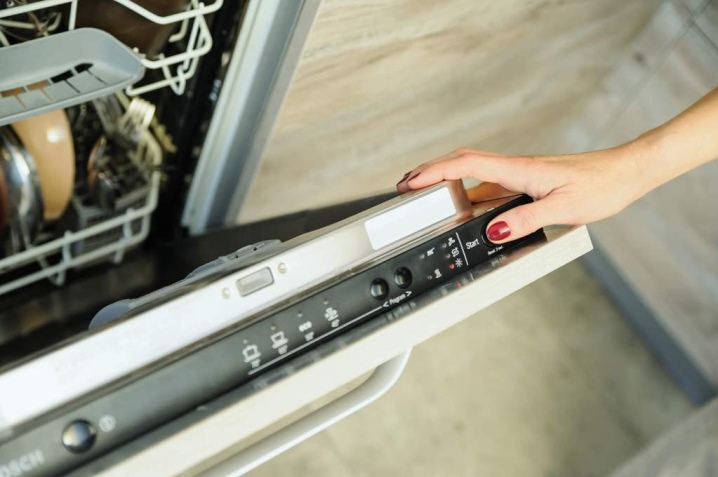
Use of chemicals
If fresh dirt can be removed with a rag and stainless steel cleaner, it is recommended to use anti-corrosion agents to remove old rust.
Bottled Finish is a high quality dishwasher treatment. It must be installed in the tray with the throat down. Next, you need to run the machine for a full cycle, setting the temperature to 65 degrees.
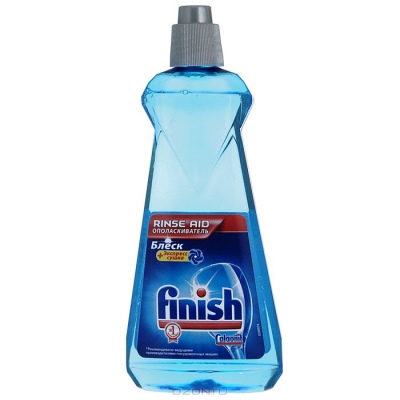
Let's take a look at the most popular chemicals for removing grease and limescale.
- Finish Cleaner - a common remedy that well cleans the insides of white bloom, grease and musty odor.
- "Anti-scale" - sand for cleaning the dishwasher. It copes well with the destruction of limescale.
- "Filtero" - liquid for washing the dishwasher. It removes grease and limescale well.
- "Electrolux" - a liquid capable of removing small pieces of food. The tool is also found in the form of a powder, which copes well with scale and leaves a pleasant smell after itself.
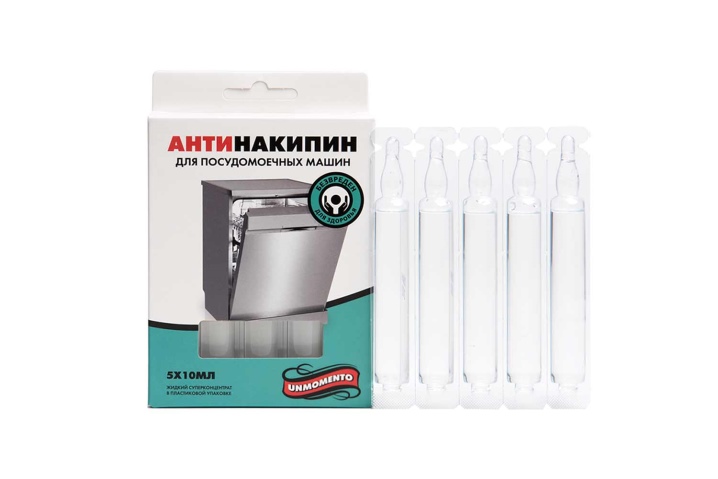
How to wash with folk remedies?
Chemical care products for the car do an excellent job: they remove grease, odors, scale. However, they are expensive, and many owners are trying to save money on cleaning. Three popular recipes will be described below, ingredients for them are in every home.
Baking soda, citric acid, and vinegar do the best for cleaning techniques.

Vinegar with baking soda
The recipe is quite simple: you need to pour 2 cups of vinegar into a deep container. Next, it should be placed in the upper basket, some housewives prefer to pour salt on the bottom, then you need to turn on the machine for the maximum duration.
When the water heats up, stop the wash and leave the product overnight without removing the container of vinegar. By morning, all the debris will be soft and you can remove it without much difficulty.
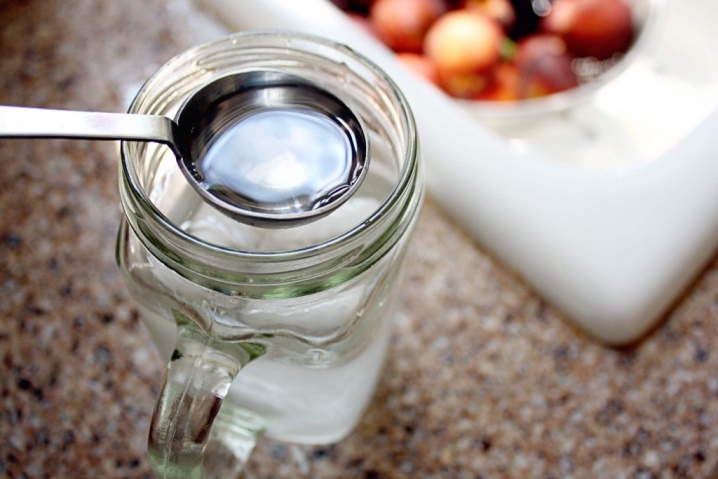
Lemon acid
Another remedy that helps well in the fight against scale. Consumption depends on the size of the dishwasher, but in most cases 200 grams will be sufficient. The cleaning process is not much different from the above method. But the opinions of experts differ on this issue. The acid is actually great at removing limescale, but it can harm the seals - keep in mind.
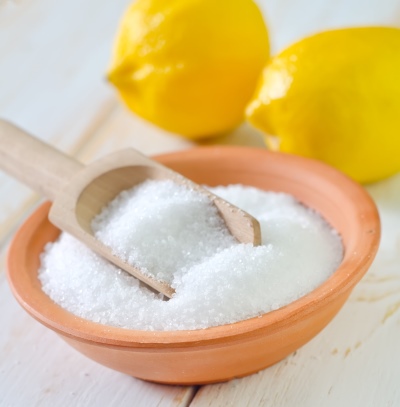
If you're afraid of experimenting, you can dilute the water, vinegar and lemon powder and remove the limescale manually using a spray bottle and a rag. Make sure that the solution does not come into contact with the rubber parts.
Soda with essential oil
Many housewives like to make tablets from water and essential oil. They not only remove grease and plaque, but also leave behind a pleasant scent.
Let's consider how to cook.
- Take a glass, pour soda there, add 2 tablespoons of hydrogen peroxide and 15 drops of essential oil.
- The resulting mixture must be thoroughly mixed until a consistency similar to wet sand is obtained.
- Next, sculpt small round tablets and lay them out at the bottom of the dishwasher.
- Turn on the wash for the maximum time.
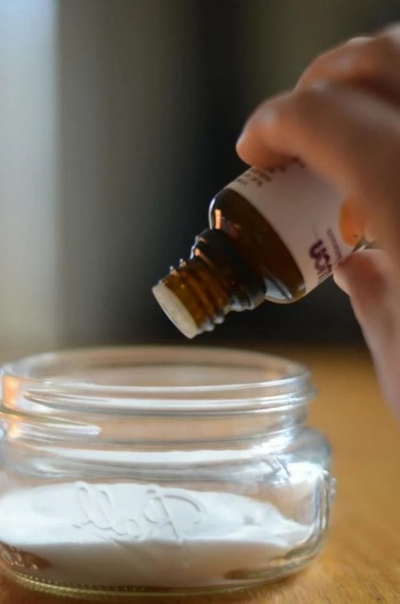
If the effect is not enough, then add two glasses of vinegar to the basket.













The comment was sent successfully.